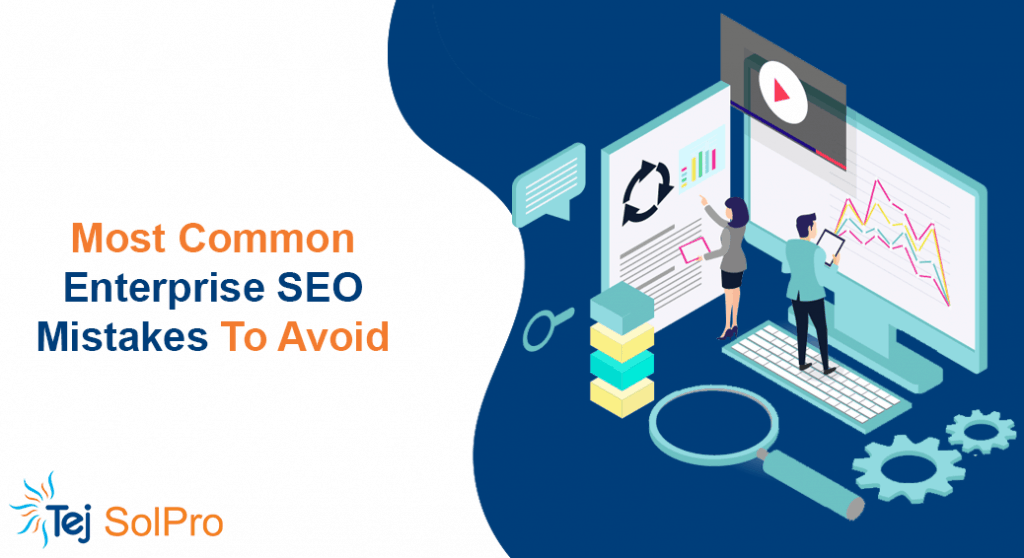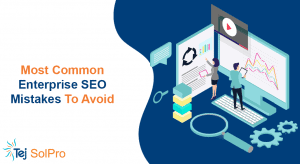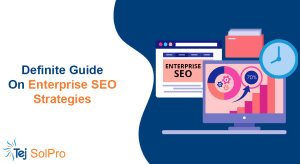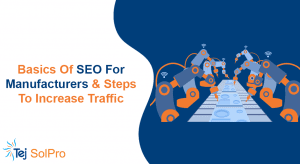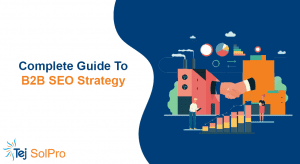Enterprise SEO is not just about scale. It’s about consistency, control, and coordination across thousands of pages, stakeholders, and systems.
One broken link, a misconfigured tag, or an ignored crawl error on an enterprise site can affect millions in revenue and visibility.
This blog breaks down the most critical enterprise SEO mistakes that slow growth, hurt rankings, and waste time. You’ll also learn how to spot these issues early and fix them fast without overcomplicating things.
Let’s get into it.
The Biggest Enterprise SEO Mistakes
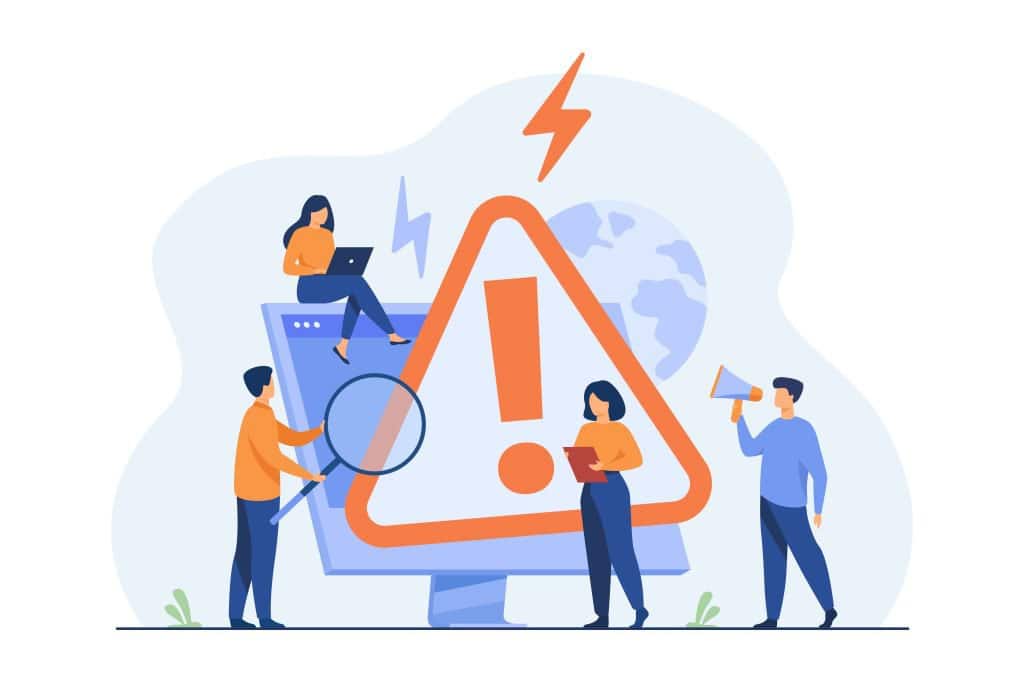
Ignoring Scalable Site Architecture
A poorly structured website makes it harder for search engines to crawl, index, and rank your pages.
In enterprise SEO, this problem multiplies with size. If your site has hundreds of categories or deep folder structures, it creates crawl delays and index bloat.
What these Enterprise SEO mistakes looks like:
- Important pages buried 4+ clicks deep
- Long, inconsistent URLs
- Multiple subdomains used without a clear logic
- Over-reliance on JavaScript for rendering content
Why it matters:
Google prioritizes content it can access quickly. If your architecture doesn’t support that, your content won’t rank no matter how good it is.
How to fix it:
- Flatten your structure: Keep key pages within 3 clicks from the homepage
- Use clean, keyword-rich URLs (no dynamic strings or deep folders)
- Build a logical hierarchy: Category → Subcategory → Page
- Create and submit XML sitemaps broken down by content type
- Test crawl paths with tools like Screaming Frog or Sitebulb
Want a quick check? If it takes more than 3 clicks to reach your product, service, or blog pages, your site needs a structure reset.
Lack of Cross-Team SEO Ownership
Enterprise SEO can’t be handled by one team alone. Yet, most large companies make that mistake.
SEO touches content, development, design, legal, product, and marketing. If these teams work in silos, SEO tasks get delayed, watered down, or completely ignored.
What this mistake looks like:
- Developers push updates without SEO checks
- Content writers skip keyword intent or structure
- Product teams launch pages that don’t get indexed
- Legal teams block crawling without understanding the impact
Why it matters:
SEO fails when it’s not baked into every workflow. Without shared ownership, errors pile up, and opportunities get missed.
How to fix it:
- Appoint an internal SEO lead to own coordination
- Train each team on SEO basics relevant to their role
- Set up clear SOPs for dev changes, redirects, and page updates
- Use tools like Jira or Asana to integrate SEO tickets into team workflows
- Create a shared dashboard showing SEO KPIs by department
When SEO becomes part of everyone’s job, it gets done right and faster.
Not Mapping Content to Search Intent
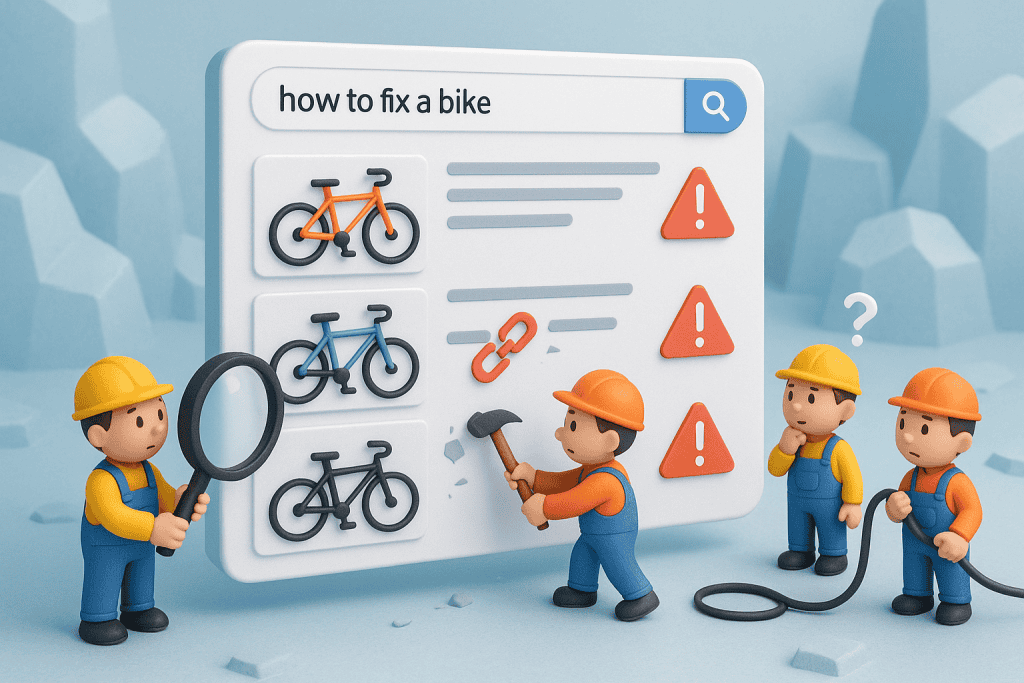
If your content doesn’t match what users are searching for, it won’t rank or convert.
Enterprise websites often publish content in bulk without aligning it to real user needs. You might have pages targeting keywords, but if those pages don’t match the search intent, Google won’t serve them.
What this mistake looks like:
- Blog posts ranking for commercial keywords
- Product pages trying to answer top-funnel questions
- No dedicated content for comparison or decision-making stages
Why it matters:
Search intent drives ranking. Google wants to serve the most useful page for each type of query whether it’s informational, navigational, or transactional.
How to fix it:
- Identify search intent behind each keyword
- “What is enterprise SEO?” → Informational
- “Enterprise SEO tools” → Commercial investigation
- “Best enterprise SEO agency” → Transactional
- Map your content types accordingly:
- Blogs for education
- Pillar pages for commercial insights
- Service or product pages for conversions
- Use tools like SEMrush, Ahrefs, or Search Console to see which pages rank for what intent and where mismatches occur
- Build content clusters for each buyer stage
When your content aligns with intent, rankings improve and so do conversions.
Poor Internal Linking Strategy
You could have great content on your site but if it’s not linked properly, Google won’t find or rank it.
Enterprise sites often have thousands of pages. Without a smart internal linking structure, many of these pages become isolated and lose ranking power.
What this mistake looks like:
- Orphan pages with zero internal links
- Links buried deep in navigation menus only
- Overuse of “click here” or irrelevant anchor text
- No system for updating or scaling links
Why it matters:
Internal links help Google crawl your site efficiently and pass link equity. They also guide users to high-value pages, improving time on site and reducing bounce rates.
How to fix it:
- Identify orphan pages using tools like Screaming Frog
- Link related blog posts, services, and resources contextually within content
- Use keyword-rich anchor text that clearly tells Google what the linked page is about
- Build navigation logic into your CMS so new pages get auto-linked in relevant hubs
- Create a hub-and-spoke content structure with pillar pages and supporting articles
A strong internal linking strategy makes your whole site stronger, not just one page.
Ignoring Core Web Vitals
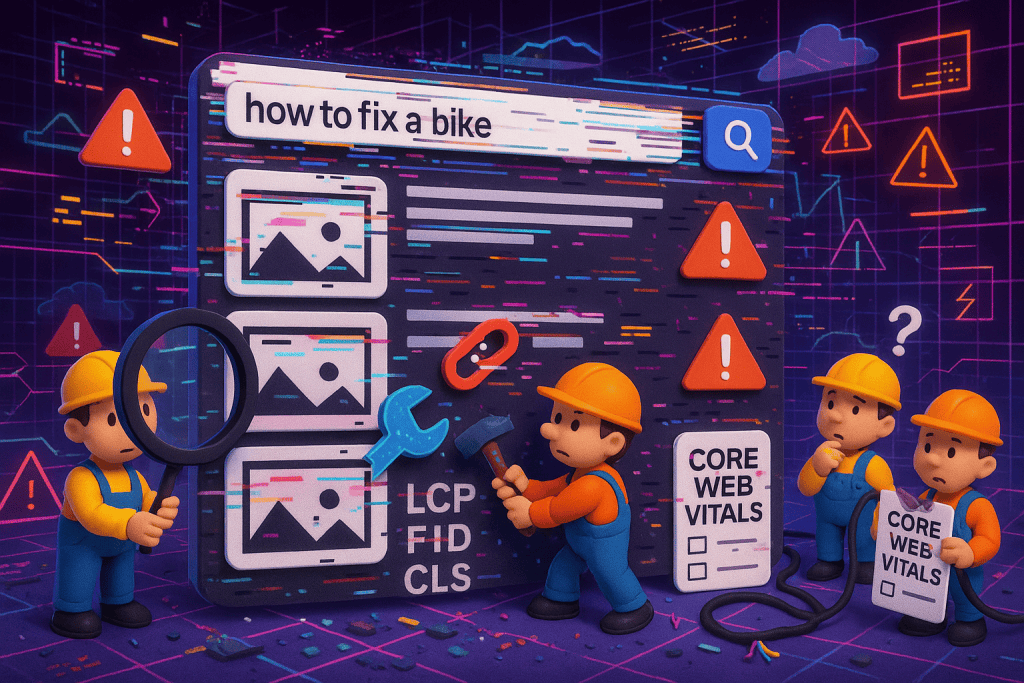
Page experience is now a ranking factor, and Core Web Vitals are at the heart of it.
If your enterprise site loads slowly, shifts on click, or delays interaction, users drop off, and so do your rankings.
What this mistake looks like:
- Slow loading product or category pages
- Layouts that jump around while loading
- Delayed button clicks or form submissions
- High mobile bounce rates
Why it matters:
Google measures real user experience across three key metrics:
- Largest Contentful Paint (LCP): Loading speed
- Cumulative Layout Shift (CLS): Visual stability
- Interaction to Next Paint (INP): Responsiveness
Poor scores mean lower visibility, especially on mobile.
How to fix it:
- Compress large images and enable lazy loading
- Use a fast, reliable hosting environment (preferably CDN-backed)
- Minimize CSS and JavaScript bloat
- Preload key fonts and assets
- Run regular audits using PageSpeed Insights or Web Vitals in Search Console
Fixing Core Web Vitals isn’t just about SEO, it’s about keeping users from bouncing before they ever see your offer.
Not Localizing for Multi-Location Businesses
Enterprise brands with multiple locations often miss out on local traffic by treating all locations the same.
Google favors localized results. If your site doesn’t serve region-specific content, you lose out to smaller, optimized competitors.
What this mistake looks like:
- One generic contact page for all offices
- No city-specific landing pages
- Inconsistent NAP (Name, Address, Phone) data
- Missing or inactive Google Business Profiles
Why it matters:
Local intent is strong in search. Someone looking for “enterprise SEO services in Ahmedabad” won’t click a generic global page they want a local presence they can trust.
How to fix it:
- Create dedicated landing pages for each city or region you serve
- Add unique content per page: team info, testimonials, local awards
- Ensure NAP consistency across your website, listings, and schema
- Set up and optimize Google Business Profiles for each location
- Use localBusiness schema to mark up each location
The more tailored your site is to local searchers, the better your visibility and conversion rates.
Duplicate Content Across Domains
Enterprise websites often manage multiple domains, subdomains, or country-specific sites. Without clear coordination, duplicate content becomes a hidden threat.
Search engines get confused about which version to index or rank, and that waters down your authority.
What this mistake looks like:
- Same product/service page copied across .com, .co.uk, and .in
- Multiple subdomains with identical blog or help content
- No canonical tags to point to the original source
- Poor or missing hreflang implementation
Why it matters:
Duplicate content leads to wasted crawl budget, diluted rankings, and indexing issues. Google may drop pages or rank the wrong version.
How to fix it:
- Use canonical tags to signal the original or preferred page
- Consolidate duplicate pages where possible
- Implement hreflang tags correctly for language and region targeting
- Avoid using boilerplate text across sites like customize intros, CTAs, and meta descriptions
- Audit duplicate content using tools like Siteliner or Ahrefs Site Audit
Fixing duplication gives Google a clear path to crawl, index, and reward the right version of your content.
Weak Mobile Optimization
More than 60% of traffic comes from mobile. If your site isn’t fast, responsive, and easy to use on smaller screens, you’re losing both rankings and users.
Yet, many enterprise websites still prioritize desktop experiences leaving mobile as an afterthought.
What this mistake looks like:
- Cluttered layouts on mobile devices
- Small tap targets or overlapping buttons
- Pop-ups that block the content
- Slow mobile load speeds even on 4G
Why it matters:
Google uses mobile-first indexing. It crawls and ranks your site based on its mobile version not desktop. If your mobile experience fails, your entire SEO performance suffers.
How to fix it:
- Use responsive design, not separate m-dot sites
- Test every template across real mobile devices, not just simulators
- Optimize font sizes, spacing, and tap areas
- Avoid intrusive interstitials and auto-play videos
- Run mobile usability tests in Google Search Console regularly
Think of mobile as the default experience, not an extra. It’s where your users are, and where Google looks first.
Skipping Structured Data Markup
Structured data helps Google understand your content better, and display it in richer ways through featured snippets, carousels, and FAQs.
Most enterprise websites either skip it entirely or apply it inconsistently, missing out on visibility.
What this mistake looks like:
- No schema on key pages like blogs, services, products
- Same schema used across all page types
- Incorrect nesting or missing required fields
- Lack of testing before deployment
Why it matters:
Structured data feeds Google’s knowledge graph, SGE snippets, and enhanced SERP features. It boosts click-through rates without needing higher rankings.
How to fix it:
- Add the right schema types to each page:
- FAQ schema for help content
- Product schema for listings
- Organization schema for your brand info
- Breadcrumb schema for site structure
- Use Google’s Rich Results Test to validate every implementation
- Automate schema deployment via your CMS templates for scalability
- Keep your schema updated as content or page layout changes
Rich results aren’t just extra, they’re expected. Without them, your listings get ignored.
Underinvesting in Technical SEO
Content and backlinks matter but technical SEO is the foundation that holds everything up. Many enterprise sites treat it as a one-time task instead of a continuous process.
That’s where rankings and crawl efficiency start to break.
What this mistake looks like:
- Thousands of crawl errors left unresolved
- JavaScript-heavy pages blocking content visibility
- Outdated XML sitemaps or broken redirects
- Slow server response times and unoptimized headers
Why it matters:
Technical issues slow down crawlers, waste crawl budget, and lead to ranking drops even when content is solid. Googlebot won’t fight to index broken or slow-loading pages.
How to fix it:
- Perform regular site audits using tools like Screaming Frog, Sitebulb, or Ahrefs
- Optimize crawl budget by blocking low-value pages via robots.txt or no-index
- Compress and minimize HTML, CSS, and JS files
- Ensure your server delivers fast, stable responses under traffic spikes
- Monitor Search Console errors weekly and set up automated alerts
Great SEO isn’t just about publishing more, it’s about making sure every page performs.
No Performance Dashboards
Most enterprise SEO issues go unnoticed not because they’re hard to fix, but because no one’s tracking them in real time.
Without live dashboards and automated reporting, you react late, miss insights, and repeat mistakes.
What this mistake looks like:
- SEO teams relying only on monthly reports
- Manual data pulling from Search Console and Analytics
- No visibility into content performance by page or cluster
- Stakeholders unclear on what’s working and what’s not
Why it matters:
SEO is a long game, but it needs short-term monitoring. Real-time dashboards surface technical issues, keyword drops, and traffic shifts, fast enough to fix before damage spreads.
How to fix it:
- Use tools like Google Data Studio (Looker) to build custom dashboards
- Pull data from GA4, Google Search Console, and keyword tracking tools
- Break down views by category, page type, traffic source, and location
- Set up alerts for sudden ranking drops or traffic dips
- Share live dashboards with content, dev, and marketing teams
Dashboards aren’t just about reporting, they’re your early warning system.
Missing Backlink Strategy
Many enterprise websites assume their brand authority is enough. But without a clear backlink strategy, you lose ground to smaller competitors who actively build links.
Backlinks still drive authority, trust, and rankings, especially in competitive verticals.
What this mistake looks like:
- Relying only on branded mentions or existing PR
- No outreach or guest posting efforts
- Ignoring competitor backlink profiles
- Inconsistent link acquisition across product or service pages
Why it matters:
Google sees backlinks as signals of trust. Even if your site has size and age, fresh and relevant links show that your content is still valuable.
How to fix it:
- Analyze competitors’ backlink sources using Ahrefs or SEMrush
- Identify link gaps where they’re ranking and you’re not
- Pitch guest posts, podcasts, or co-branded content with industry sites
- Build link-worthy content like original research, templates, or tools
- Track backlinks monthly and disavow harmful or spam links
A strong backlink strategy keeps your authority growing and your rankings defensible.
Mini Enterprise SEO Audit Template
Here’s a simple audit table to help you spot and fix the most common enterprise SEO issues. You can use this as a quick internal health check before deeper analysis.
| Audit Area | Common Mistake | Fix |
| Site Architecture | Too many nested folders and deep URLs | Flatten structure to max 3 levels deep |
| Indexing | Duplicate or thin pages competing for rankings | Consolidate, add canonicals, or noindex |
| Content | Mismatch with search intent or outdated content | Map content to buyer journey and refresh regularly |
| Internal Linking | Orphan pages or irrelevant anchors | Add contextual links with keyword-rich anchors |
| Speed & UX | High LCP and layout shifts | Compress media, reduce JS/CSS, preload assets |
| Schema Markup | No or incorrect structured data | Add proper schema types and validate with Rich Results Test |
| Local SEO | One-size-fits-all location page | Create unique pages per region with local content and GMB sync |
| Backlinks | No active link-building plan | Run gap analysis, outreach to partners, pitch linkable assets |
| Tracking & Monitoring | No dashboards or live error alerts | Use Looker Studio with GA4, GSC, and site crawlers for visibility |
This table can also double as a checklist to run through with your dev or content teams.
Real-World Case Example
Tej SolPro worked with Caringly Yours, a new blog from Bajaj Allianz, with one goal, to grow traffic from scratch.
The site had no existing keyword plan, no content structure, and no backlinks.
What we fixed:
- Did category-wise keyword research
- Mapped keywords into intros, titles, and headers
- Created strong meta tags and internal links
- Ran competitor analysis to guide blog topics
- Started basic link building (22.4K backlinks in a year)
What happened next:
- Went from 0 to 5 lakh page views in 12 months
- Organic traffic grew by 412% in 6 months
- Bounce rate dropped to 42.6%
A clean enterprise SEO guide. No fluff. Just results.
Conclusion
Enterprise SEO isn’t about adding more tools or creating more pages. It’s about solving the right problems across a large system before they compound.
Most issues aren’t new. They’re basic things done inconsistently: weak internal links, bloated architecture, missing intent, or no structured data.
Fixing these 12 mistakes can unlock faster indexing, higher keyword coverage, and scalable traffic growth. And the earlier you spot them, the easier they are to fix.

